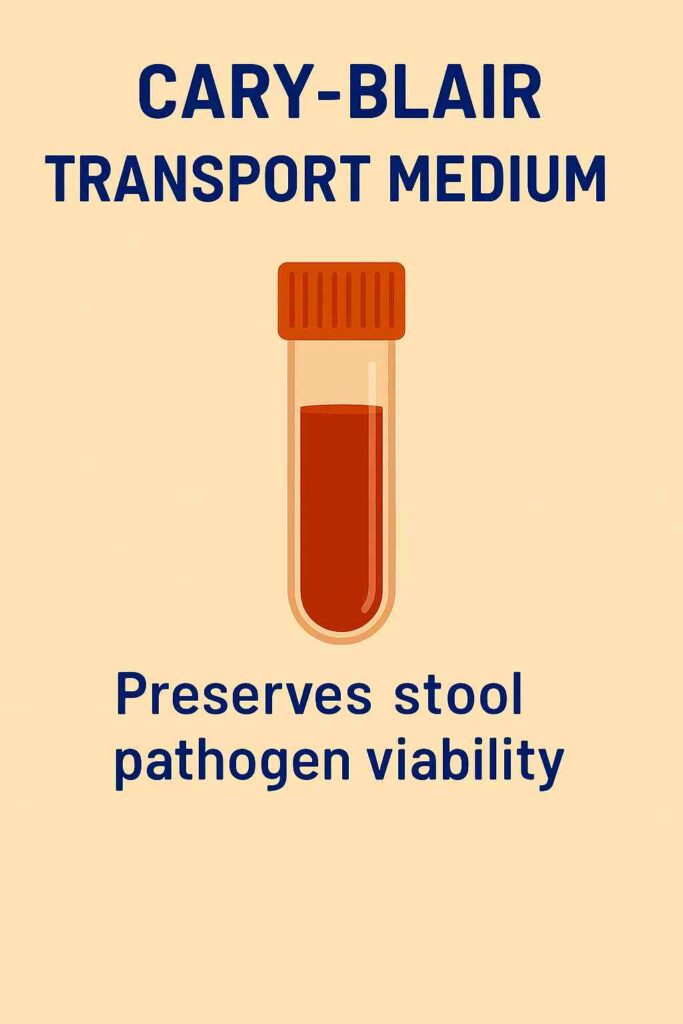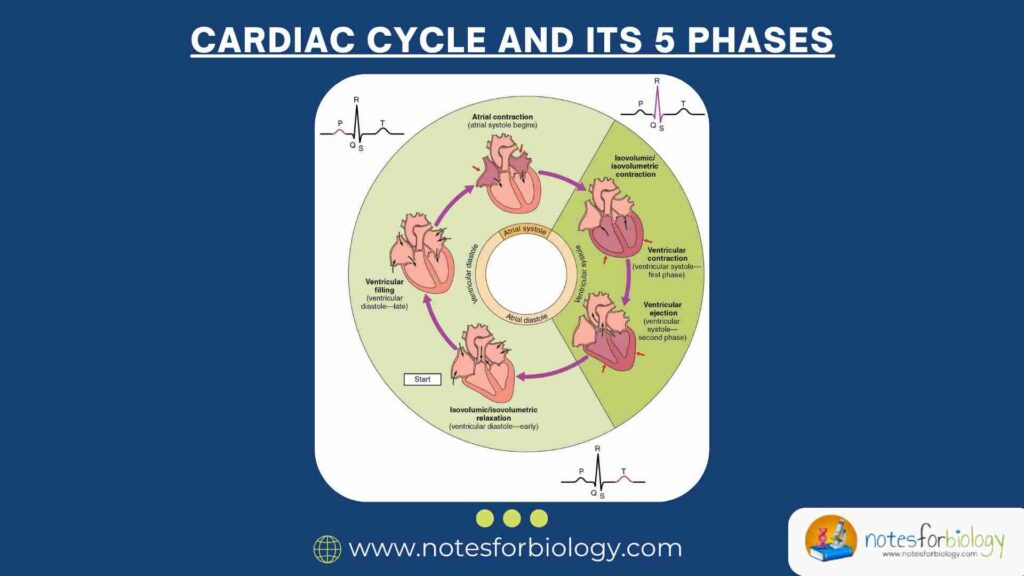Cary Blair Transport Medium is widely recognized and recommended by health authorities, including the Centers for Disease Control and Prevention (CDC), for the transport of clinical specimens, especially in cases where immediate processing is not feasible. Its effectiveness in preserving the integrity of samples has made it a standard choice in clinical and public health microbiology for the diagnosis of gastrointestinal infections.
In the realm of microbiology, the accurate diagnosis of gastrointestinal infections hinges on the integrity of the specimen from collection to analysis. Enter Cary-Blair Transport Medium, a specialized solution designed to preserve the viability of enteric pathogens during transit to the laboratory.
Understanding Cary Blair Transport Medium

Developed in the 1960s by microbiologists Cary and Blair, this medium was an enhancement of the earlier Stuart’s Transport Medium. The goal was to create a formulation that could maintain the viability of delicate enteric bacteria, such as Salmonella, Shigella, and Vibrio cholerae, during transportation, especially when immediate culturing wasn’t feasible .
Summary of Cary Blair Transport Medium
- Cary-Blair Transport Medium is a semi-solid, non-nutritive medium designed to preserve the viability of enteric pathogens like Salmonella, Shigella, and Vibrio cholerae during specimen transport to the laboratory.
- Its formulation includes minimal nutrients, a high alkaline pH, and a low oxidation-reduction potential, which collectively prevent bacterial overgrowth while maintaining pathogen viability.
- Widely recommended by health authorities, this medium ensures accurate diagnostic results by maintaining the integrity of stool and rectal swab specimens during transit.
Table of Contents
Composition and Functionality of Cary Blair Transport Medium
The efficacy of Cary-Blair Medium lies in its carefully balanced components:
- Minimal Nutrients: The medium is intentionally low in nutrients to prevent the overgrowth of bacteria during transit, ensuring that the sample’s microbial composition remains unchanged.
- Sodium Thioglycollate: Acts as a reducing agent, maintaining a low oxidation-reduction potential, which is conducive to the survival of anaerobic and facultative anaerobic organisms.
- Disodium Hydrogen Phosphate: Serves as a buffering agent, stabilizing the pH of the medium.
- Sodium Chloride and Calcium Chloride: These salts maintain osmotic balance, preserving the structural integrity of bacterial cells.
- Agar: Provides a semi-solid consistency, facilitating the transport of swab specimens by preventing spillage and allowing for easy handling .
Principle Behind the Medium
The primary objective of Cary-Blair Medium is to maintain the viability of enteric pathogens without promoting their multiplication. By creating an environment with minimal nutrients, a stable alkaline pH (around 8.4), and low oxidation-reduction potential, the medium preserves the original state of the specimen. This is crucial for accurate laboratory analysis, as it ensures that the detected organisms reflect the patient’s actual condition at the time of collection.
Preparation Guidelines of Cary Blair Transport Medium
While commercial preparations are available, understanding the preparation process provides insight into the medium’s functionality:
- Dissolution: The dehydrated medium is dissolved in distilled water, typically at a concentration specified by the manufacturer.
- Heating: The solution is heated to boiling to ensure complete dissolution of components.
- Cooling and Additives: After cooling to approximately 50°C, calcium chloride may be added if not already included in the base formulation.
- pH Adjustment: The pH is adjusted to 8.4 to maintain the medium’s alkalinity.
- Dispensing: The medium is dispensed into sterile containers, ensuring that swabs can be fully immersed.
- Sterilization: The filled containers are steamed (not autoclaved) at 100°C for 15 minutes to achieve sterility without degrading the medium’s components.
- Storage: Once cooled, the containers are sealed and stored in a cool, dark place. Properly prepared Cary-Blair Medium can be stored for up to a year, provided there are no signs of contamination or degradation .
Results of Cary Blair Transport Medium

Cary Blair Transport Medium is used to preserve and transport enteric pathogens like Salmonella, Shigella, Vibrio cholerae, and Escherichia coli O157:H7. The expected results depend on the viability of the organisms during transport:
- Positive Results: If the medium successfully maintains the viability of the bacteria, they can be cultured and identified in the lab.
- Negative Results: If the bacteria do not survive transport, they may not grow on culture media, leading to false-negative results.
The medium’s high pH (8.4) helps preserve Vibrio cholerae for extended periods, while its low oxidation-reduction potential prevents bacterial overgrowth.
Applications in Clinical Settings of Cary Blair Transport Medium
Cary-Blair Medium is predominantly used for:
- Transporting Stool and Rectal Swab Specimens: Particularly when testing for enteric pathogens like Shigella, Salmonella, Vibrio cholerae, and Escherichia coli O157:H7.
- Preserving Specimens for Delayed Analysis: In situations where immediate culturing isn’t possible, the medium maintains the viability of pathogens for accurate diagnosis upon arrival at the laboratory.
- Supporting Molecular Diagnostics: The medium is compatible with various molecular assays, including PCR-based tests, as it preserves the integrity of nucleic acids .
Limitations and Considerations of Cary Blair Transport Medium
While Cary Blair Transport Medium is highly effective for its intended purpose, certain limitations should be noted:
- Not Suitable for Long-Term Storage: The medium is designed for short-term preservation during transport, not for extended storage of specimens.
- Ineffectiveness for Certain Pathogens: It may not be suitable for the preservation of anaerobic bacteria, viruses, or fungi.
- Temperature Sensitivity: Specimens should be transported promptly and, if delays are anticipated, refrigerated to maintain pathogen viability.
- Potential pH Changes: Highly acidic stool specimens can overcome the medium’s buffering capacity, leading to pH shifts that may affect pathogen survival .
Conclusion
Cary Blair Transport Medium plays a pivotal role in the accurate diagnosis of gastrointestinal infections by preserving the viability of enteric pathogens during specimen transport. Its carefully balanced composition ensures that the microbial flora remains unchanged from collection to analysis, providing reliable results that inform effective patient care. Understanding its preparation, applications, and limitations is essential for laboratory personnel and healthcare providers involved in the diagnostic process.
Frequently Asked Questions (FAQs)
What is Cary-Blair Transport Medium?
Cary-Blair Transport Medium is a specialized, semi-solid medium formulated to preserve the viability of enteric pathogens such as Salmonella, Shigella, and Vibrio cholerae in stool and rectal swab specimens during transportation to the laboratory.
Why is Cary-Blair Medium important in clinical diagnostics?
It maintains the integrity of gastrointestinal specimens by preventing the overgrowth of non-target organisms and preserving the pathogens of interest, ensuring accurate diagnostic results upon laboratory analysis.
How does Cary-Blair Medium differ from other transport media?
Unlike nutrient-rich media that promote bacterial growth, Cary-Blair Medium has a low nutrient content, high pH, and low oxidation-reduction potential, creating an environment that preserves pathogens without encouraging their multiplication
Related Articles




